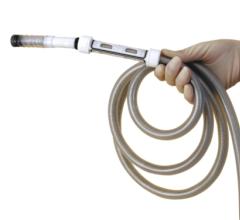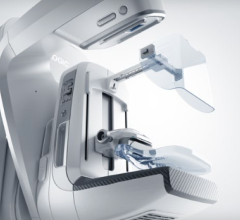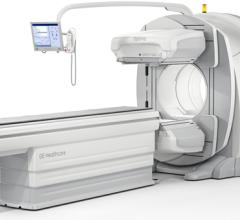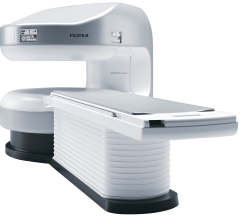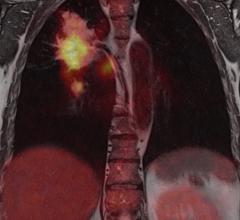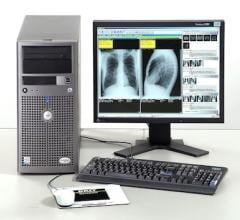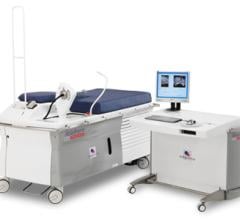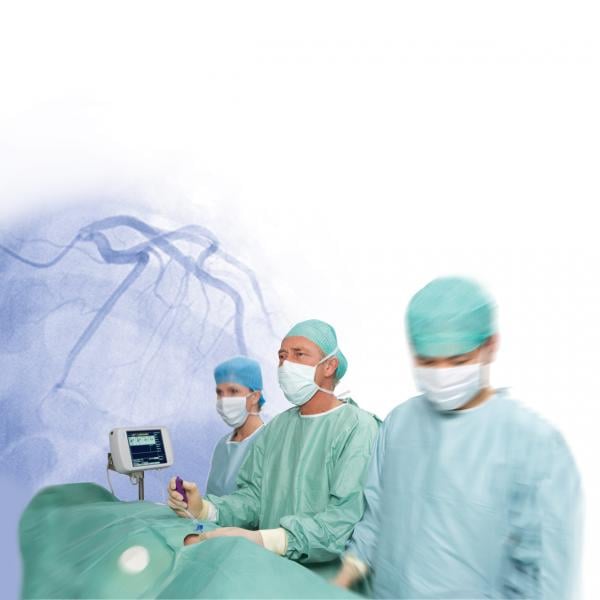For better treatment planning during cardiac resynchronization therapy (CRT), Toshiba America Medical System Inc.’s Activation Imaging is the company’s latest addition to its 3-D Wall Motion Tracking software. Activation Imaging is an U.S. Food and Drug Administration (FDA)-cleared, proprietary technology available on the Aplio Artida cardiovascular ultrasound system.
March 14, 2013 — invendo medical announced it has entered the U.S. market with the first installation of systems at two renowned GI endoscopy centers, NYU Langone Medical Center and New York-Presbyterian Hospital/Columbia University Medical Center.
March 14, 2013 — Lantheus Medical Imaging Inc. announced the U.S. Food and Drug Administration (FDA) has granted approval of a supplemental new drug application (sNDA) that allows Jubilant HollisterStier (JHS) to be a new manufacturing site for its ultrasound imaging agent, Definity Vial for (Perflutren Lipid Microsphere) Injectable Suspension.
While most women understand the importance of health screenings, an estimated 72 million have missed or postponed a ...
In the Canterbury region of New Zealand, the Canterbury District Health Board (DHB) ensures the effective coordination and delivery of public healthcare services to the district’s 500,000 residents. It is the largest employer in New Zealand’s South Island, with more than 9,000 staff across 14 hospitals and numerous community bases.Canterbury DHB is highly patient-centric. The group strives diligently to remove bottlenecks from what is often referred to as “the patient’s journey.” Canterbury DHB has used Intelerad’s IntelePACS for the seamless archiving, distributing, and secure sharing of images and reports.IntelePACS’ integrated workflow, universal worklist, and comprehensive InteleViewer module increase productivity and efficiency for the organization’s radiologists. “It is Intelerad’s workflow that makes the difference,” says Dr. Sean Skea, Canterbury DHB’s chief of radiology at Christchurch Hospital.In the Christchurch area, the patient journey may begin in the public system, continue with a private specialist and then return to the public system. Efficiency in patient imaging is maintained, however, because private practitioners in Christchurch also use IntelePACS. Thus, physicians and radiologists get instant, seamless access to prior images and reports, whether the studies originated in the public or private system.The availability of a common, robust PACS solution also allows Canterbury DHB to effectively share its radiology workload with the private sector when necessary. This has been critical as demand for services can outpace the supply of radiologists in the public system.
March 13, 2013 — GE Healthcare announced last month the first global commercial installation of its Optima NM/CT 640 technology, a new performance SPECT/CT system that helps physicians balance high image quality with low patient radiation dose and efficiency.

SPONSORED CONTENT — Fujifilm’s latest CT technology brings exceptional image quality to a compact and user- and patient ...
March 13, 2013 — The March 2013 issue of the Journal of Urology includes a study conducted by four physicians from Radiotherapy Clinics of Georgia (RCOG), a Vantage Oncology affiliate. The study, 25 Year Disease Free Survival Rate after Irradiation of Prostate Cancer Calculated with the Prostate Specific Antigen Definition of Recurrence Used for Radical Prostatectomy, is the first to analyze 25 years of follow-up data after radiation therapy treatment for prostate cancer patients.
Fujifilm’s APERTO Lucent is a 0.4T mid-field, open MRI system addressing today’s capability and image quality needs ...
What a difference a few decades makes. In the early-1980s radiologists couldn’t wait to get their hands on an MR scanner. Never mind the clinical value was anything but certain. The most anybody could say is that MR absolutely, positively diagnosed multiple sclerosis. Reimbursement, shmeimbursement. Lay down a couple or three million dollars. Knock down a wall. Bring that monster in. We’ll just hope it pans out.
Atherosclerosis is usually considered to be related to contemporary risk factors such as smoking, obesity and lack of exercise. However, researchers suggest that high prevalence of atherosclerosis in pre-modern humans may support the possibility of a more basic human predisposition to the disease.
March 12, 2013 — TeraMedica announced the opening of a new U.K. office to service markets in Europe, Africa and the Middle East, spearheading the firm’s international expansion.
SPONSORED CONTENT — Fujifilm’s latest CT technology brings exceptional image quality to a compact and user- and patient ...
March 12, 2013 — Brit Systems announced that Novation, the healthcare supply chain expertise and contracting company for VHA, has awarded the company a three-year contract with the potential for two expansion years. The contract starts May 1, 2013.
March 12, 2013 — EDAP TMS SA announced that the U.S. Food and Drug Administration (FDA) has provided a positive administrative acceptance review notification for the company's premarket approval (PMA) application for its Ablatherm integrated imaging HIFU (high-intensity focused ultrasound) device for treatment of low-risk, localized prostate cancer.
Many physicians have long believed that the use of intravenous contrast agents for computed tomography (CT) scans can cause acute kidney injury. New Mayo Clinic research questions the strength of the causal link between the two. The findings from two tandem studies are published online in the journal Radiology.
SPONSORED CONTENT — EnsightTM 2.0 is the newest version of Enlitic’s data standardization software framework. Ensight is ...
March 11, 2013 — HealthHelp announced it will launch in select markets in May its MedTree QDS, a transparent clinical decision support (CDS) system that allows providers to self-govern the ordering process and receive approval for a test or procedure in less than one minute.
March 11, 2013 — Accelarad announced the selection of its medical imaging solution by Hospital for Special Surgery (HSS) to improve medical image sharing and care coordination with referring physicians anywhere in the world.
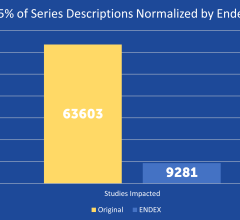
SPONSORED CONTENT — EnsightTM 2.0 is the newest version of Enlitic’s data standardization software framework. Ensight is ...
Siemens Healthcare has announced that the U.S. Food and Drug Administration (FDA) has cleared its Artis Q and Artis Q.zen angiography system families, which feature revolutionary new X-ray tube and detector technology designed to improve minimally invasive therapy of diseases such as coronary artery disease (CAD), stroke and cancer. The new X-ray tube in both the Artis Q and Artis Q.zen can help physicians identify small vessels up to 70 percent better than conventional X-ray tube technology. The Artis Q.zen combines this X-ray source with a new detector technology that supports interventional imaging in ultra-low-dose ranges to patients, doctors and medical staff — particularly during longer interventions. With the Artis Q and Artis Q.zen system families, Siemens Healthcare again demonstrates its innovative strength and market competitiveness — key components of its Agenda 2013 two-year global Sector initiative.
Mach 7 Technologies introduced the new iModality application for mobile devices. The Keystone Suite allows clinicians to capture medical imaging data from an iPhone or iPad to be stored on a patient's electronic health record (EHR).
Nearly 300 radiologic technologists from North Carolina visited with lawmakers in Raleigh on Feb. 27 to ask them to support licensing standards for the state’s personnel who perform medical imaging and radiation therapy procedures.
March 7, 2013 — Senate Bill 1115, which would require individuals in Idaho to secure a license before performing medical imaging and radiation therapy procedures, is currently awaiting a hearing in the Idaho Senate Committee on Health and Welfare.
March 7, 2013 — Ultrasound technology could soon experience a significant upgrade that would enable it to produce high-quality, high-resolution images, thanks to the development of a new key material by a team of researchers that includes a professor in the department of biomedical engineering at Texas A&M University.
The American Society of Echocardiography (ASE) has released a list of five interventions whose appropriateness physicians and patients should discuss as part of Choosing Wisely, an initiative of the ABIM Foundation, along with Consumer Reports. First in the list, they ask that patients and their doctors talk about the real need for additional echocardiograms when there are only minor signs of heart valve leakage.


 March 15, 2013
March 15, 2013 
